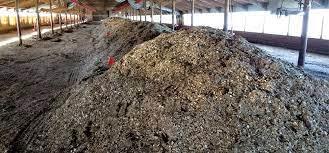The report of Highly Pathogenic Avian Influenza (HPAI) H5N1 strain in a broiler parent flock in Fresno County, CA. on August 22nd was the most recent diagnosis since the cluster in commercial turkeys in three counties in Utah on July 26th. The last outbreak in a commercial egg-production complex was on June 7th in Weld County, CO. involving two million birds.
 Notwithstanding the limited number of outbreaks among commercial egg-production complexes and broiler growing farms, there have been numerous reports of the disease in backyard flocks. There were ten diagnosed cases in non-commercial flocks from August 2nd through August 24th in eight states ranging from California in the West, Florida in the East and from Georgia in the South to Alaska in the North, indicating widespread dissemination of the 2022 virus.
Notwithstanding the limited number of outbreaks among commercial egg-production complexes and broiler growing farms, there have been numerous reports of the disease in backyard flocks. There were ten diagnosed cases in non-commercial flocks from August 2nd through August 24th in eight states ranging from California in the West, Florida in the East and from Georgia in the South to Alaska in the North, indicating widespread dissemination of the 2022 virus.
It is presumed that the outbreaks among backyard flocks are under-reported and are due to contact between non-confined, domestic poultry with free-living birds and not necessarily migratory waterfowl given cases in July and August.
Diagnoses of HPAI extending beyond what might be regarded as the “avian influenza season” that has in past epornitics ended in June, suggests that wild-bird reservoirs are shedding virus to backyard flocks that operate with little or no biosecurity. From an epidemiologic perspective, backyard flocks serve as sentinels for the presence of virus in wild-bird reservoirs. Extensive and structured field surveys of wild domestic birds should be conducted by APHIS in conjunction with federal and state wildlife specialists. This will allow the U.S. industry to determine the extent of infection and to respond with enhanced protective measures. The limited number of outbreaks reported among broilers and egg-producing flocks suggests relatively high levels of biosecurity relative to turkey producers.
The USDA has yet to publish results of studies on the current epornitic incorporating molecular and field epidemiology required to establish risk factors leading to infection of flocks. A long overdue report is necessary to define the modes of transmission and to guide protective measures for the various sectors of the industry.
It is highly probable that HPAI has moved from being an exotic infection with sporadic outbreaks introduced by migratory waterfowl on a seasonal basis to a current endemic status. Clearly, experience in Europe and Asia and now in North America, predicate a different approach to prevention. Simply playing whack-a-mole with outbreaks in commercial farms as they are diagnosed will be progressively more expensive and futile even in the short term. France has “eradicated” HPAI in their foie gras industry annually for a number of consecutive years. There is growing consumer antagonism against mass depopulation, especially applying VSD in aviary and cage housing.
 If HPAI is either seasonally or consistently endemic, the poultry industry must respond with effective immunization of flocks since as has been previously stated “HPAI is now the Newcastle disease of the 2020s”. Vaccination will require a new generation of gene-deleted or vector vaccines with broad H5 and H7 specificity. Emerging technology in vaccinology and modifying trade regulations will be the subject of an upcoming international meeting in Paris organized by leading specialists in epidemiology, molecular virology and regulatory affairs relating to avian influenza.
If HPAI is either seasonally or consistently endemic, the poultry industry must respond with effective immunization of flocks since as has been previously stated “HPAI is now the Newcastle disease of the 2020s”. Vaccination will require a new generation of gene-deleted or vector vaccines with broad H5 and H7 specificity. Emerging technology in vaccinology and modifying trade regulations will be the subject of an upcoming international meeting in Paris organized by leading specialists in epidemiology, molecular virology and regulatory affairs relating to avian influenza.
The quicker that the poultry industry understands the epidemiology of Avian Influenza as it has affected flocks in the E.U., Asia and North America since 2021, the quicker we will have more effective protective measures, including vaccines. Understanding the diverse risk factors from the 2022 outbreaks that have occurred in U.S. turkey, broiler and egg production units will contribute to more effective biosecurity procedures that will be part of comprehensive future programs including vaccination.